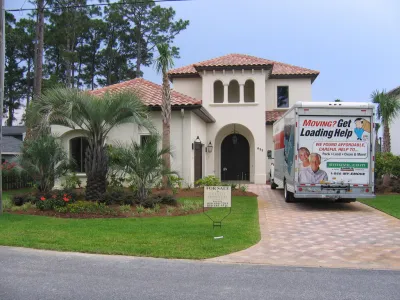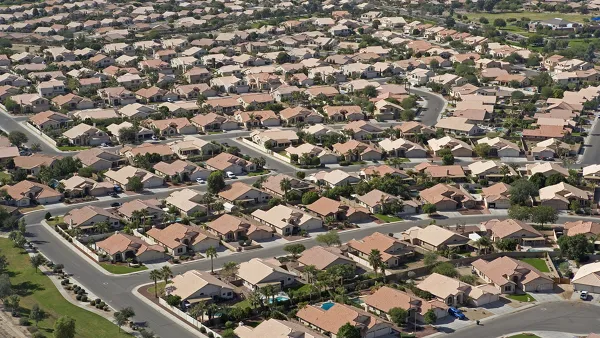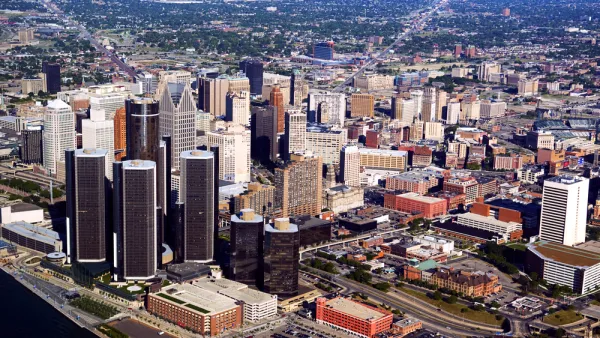Commentators often say an influx of wealth is transforming American cities. But if prosperity is really still suburban, what are the consequences for the environment?

Working from a Martin Prosperity Institute study on residential segregation, Ben Adler argues, "The gentrification trend in a handful of coastal cities has been blown way out of proportion by journalists who happen to live there, when far more urban neighborhoods remain mired in poverty."
"This is bad news for the environment. The constant push to expand the urban periphery paves over undeveloped land and requires carbon-intensive activities, from cutting down trees to mixing asphalt. Once they get to the suburbs, people consume more energy to heat and cool their larger, detached homes, water their bigger lawns, and drive more frequently and farther."
Adler points out that the urban rebirth hypothesis confuses city and metro area statistics: actual city residents remain poorer than their suburban neighbors. From the article: "In addition to the suburb-versus-city segregation, suburbs are themselves typically more economically segregated than cities, because they do not offer as wide a variety of housing types. A suburban town that requires each house to sit on its own lot of no less than, say, one-quarter of an acre, makes all the housing unaffordable to low-income workers."
The article also calls attention to non-resident visitors, a source of diversity that suburbs often lack. "Another way you will see more diversity in those New York neighborhoods is that you will encounter people in them, such as shoppers and workers, who do not live there. As [Richard] Florida readily agrees, measuring residential segregation only tells part of the story of what people experience in their daily lives."
FULL STORY: No, the rich are not all moving to the city now

National Parks Layoffs Will Cause Communities to Lose Billions
Thousands of essential park workers were laid off this week, just before the busy spring break season.

Retro-silient?: America’s First “Eco-burb,” The Woodlands Turns 50
A master-planned community north of Houston offers lessons on green infrastructure and resilient design, but falls short of its founder’s lofty affordability and walkability goals.

Delivering for America Plan Will Downgrade Mail Service in at Least 49.5 Percent of Zip Codes
Republican and Democrat lawmakers criticize the plan for its disproportionate negative impact on rural communities.

Test News Post 1
This is a summary

Test News Headline 46
Test for the image on the front page.

Balancing Bombs and Butterflies: How the National Guard Protects a Rare Species
The National Guard at Fort Indiantown Gap uses GIS technology and land management strategies to balance military training with conservation efforts, ensuring the survival of the rare eastern regal fritillary butterfly.
Urban Design for Planners 1: Software Tools
This six-course series explores essential urban design concepts using open source software and equips planners with the tools they need to participate fully in the urban design process.
Planning for Universal Design
Learn the tools for implementing Universal Design in planning regulations.
EMC Planning Group, Inc.
Planetizen
Planetizen
Mpact (formerly Rail~Volution)
Great Falls Development Authority, Inc.
HUDs Office of Policy Development and Research
NYU Wagner Graduate School of Public Service





























